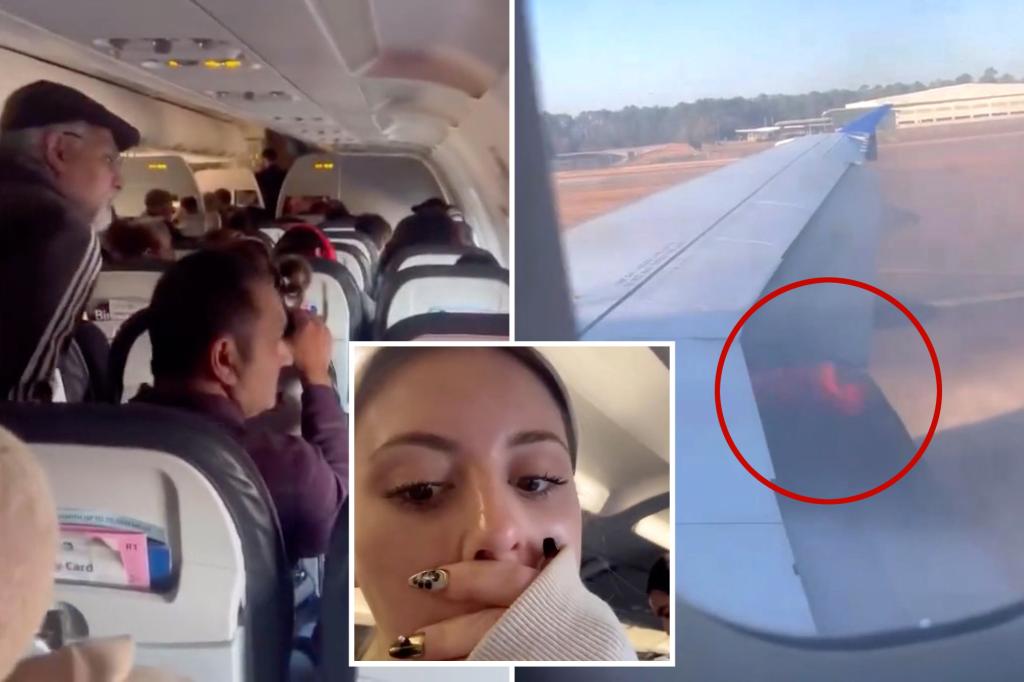Paragraph 1: The Incident
On a seemingly ordinary Sunday morning, a routine flight from Houston to New York took a dramatic turn, transforming from a mundane travel experience into a heart-pounding escape. United Airlines Flight 1382, an Airbus A320 carrying 104 passengers and five crew members, was poised for takeoff from George Bush Intercontinental Airport (IAH) in Houston, Texas. As the aircraft commenced its roll down the runway, a terrifying sight unfolded – flames erupted from one of the airplane’s wings, instantly shattering the calm and plunging the passengers into a state of panic. The time was just after 8:30 a.m., and what should have been a smooth ascent into the skies became a desperate scramble for safety.
Paragraph 2: The Emergency Response
Amidst the chaos and fear, the flight crew acted swiftly, aborting the takeoff and initiating emergency procedures. The passengers, undoubtedly shaken by the near-disaster, evacuated the aircraft via emergency slides onto the runway. Footage of the evacuation captured the palpable fear and urgency of the situation, with panicked voices echoing as passengers slid down the inflatable chutes and hurried away from the burning wing. Houston firefighters, already alerted to the emergency, arrived promptly at the scene, assisting in the evacuation and ensuring the safety of all those on board. Fortunately, despite the dramatic nature of the incident, no injuries were reported, a testament to the swift and coordinated actions of the crew and emergency responders.
Paragraph 3: Aftermath and Investigation
Following the evacuation, passengers were transported by bus back to the terminal, where they awaited further instructions from United Airlines. The airline rescheduled the flight for a later departure, aiming to minimize the disruption to passengers’ travel plans while prioritizing their safety. While the cause of the engine fire remained unclear immediately after the incident, the Federal Aviation Administration (FAA) launched an investigation to determine the root cause of the malfunction. Fire officials and an IAH spokesperson later clarified that firefighters did not actively extinguish a fire, suggesting that the flames might have subsided on their own or been contained by the aircraft’s fire suppression systems.
Paragraph 4: Passenger Accounts and Reactions
The incident left a lasting impression on the passengers, many of whom shared their experiences and reactions on social media and in interviews. Some described the fear and adrenaline that coursed through them as they witnessed the flames and evacuated the plane. Others expressed gratitude for the professionalism and composure of the flight crew and emergency responders. The incident served as a stark reminder of the inherent risks associated with air travel, despite its generally high safety record. The prompt and coordinated response, however, offered reassurance that procedures are in place to handle such emergencies effectively.
Paragraph 5: Implications for Airline Safety
This incident, while isolated, underscores the critical importance of ongoing vigilance and rigorous safety protocols within the aviation industry. The FAA investigation will play a crucial role in identifying the specific cause of the engine fire and determining whether any systemic issues contributed to the event. The findings could lead to recommendations for improved safety measures, such as enhanced engine maintenance protocols or modifications to aircraft design. Furthermore, the incident highlights the importance of regular training and drills for flight crews and emergency responders to ensure they are prepared to handle similar situations effectively and minimize the risk of injuries or fatalities.
Paragraph 6: Looking Ahead
As the investigation unfolds, the aviation industry will undoubtedly be closely monitoring the developments and considering the implications for future safety procedures. The rapid dissemination of information about the incident through social media and news outlets underscores the importance of transparency and communication in such situations. Passengers, airlines, and regulatory bodies alike will be eager to learn from this incident and work together to prevent similar occurrences in the future. The incident serves as a potent reminder that safety remains the paramount concern in aviation, and continuous efforts are essential to maintain the highest standards of safety and ensure the well-being of passengers and crew.



